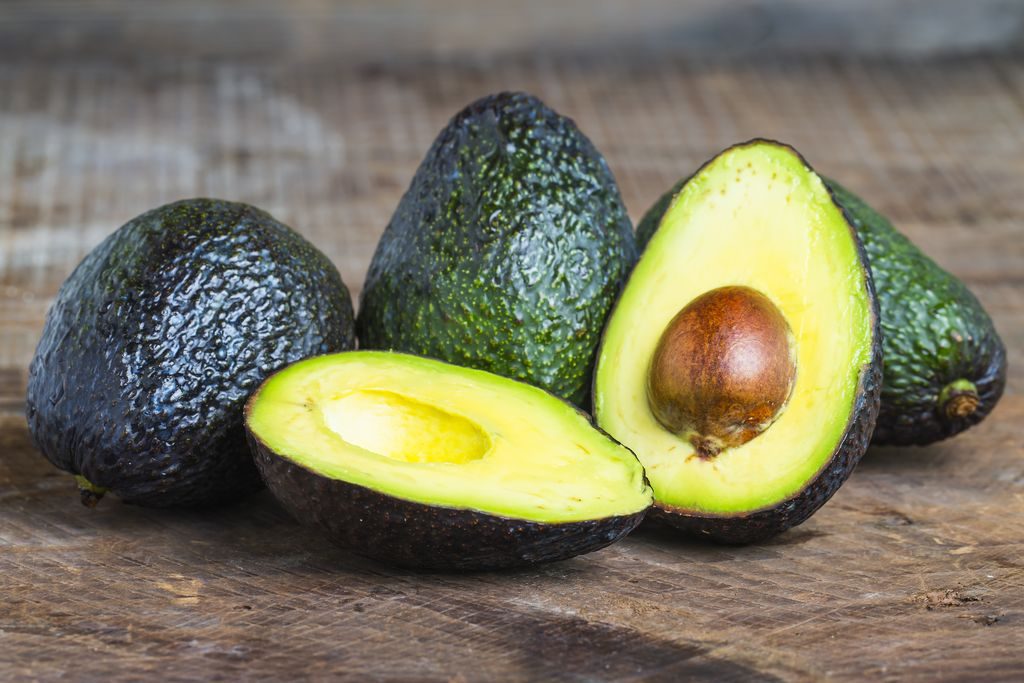Avocado
Avocado is a versatile fruit, especially appreciated for protein and fit breakfasts. It can be used both in sweet and savoury recipes, as well as the main ingredient in sauces such as Guacamole.

Food with a thousand properties, avocado is, in addition to the fruit, also the plant of tropical origin with interesting nutritional values. Versatile like few others, it lends itself to a long series of recipes (the avocado toast is only one of the most loved) and proves to be a great ally for those who love to follow a healthy diet, sportsmen and also – albeit with due precautions given its calories – for those on a diet. With salmon, with bacon, with eggs, avocado gives us great dishes, here are characteristics and uses in the kitchen.
The nutritional values of avocado
Let’s start with calories: 1 medium-sized avocado contains about 450 calories (100 g contains 160 calories). This is because the fruit is very rich in fats, although the latter is mostly monounsaturated. Among these, omega 9 oleic acid stands out, meaning the same as extra virgin olive oil. The considerable content of fibre, mineral salts, vitamin B5, B6, K, E and C, contrary to what one might think, does not contain cholesterol.
In particular, the fibres contained in avocado bring benefits to the intestine: they increase the stimulation of satiety and help against constipation and constipation. As for proteins, the fruit is rather poor. On the other hand, it is rich in folic acid, important in pregnancy. It is still useful for heart health thanks to its fatty acids. Finally, due to its low sugar and carbohydrate content, avocado is perfect for people with diabetes.
Avocado, what are the contraindications
Apart from the high content of calories and fats (albeit good), avocados with particular contraindications. It is obvious, however, that moderate consumption must be made of it. Who is allergic to latex, bananas, tomatoes, kiwis, peaches and chestnuts must eat it carefully for the possibility of possible related allergies.
Does avocado make you fat?
It is a high-fat food and, although it belongs to the category of fruit, it is also quite caloric. However, the beneficial characteristics that distinguish it are so precious that it would be a shame not to take advantage of them. Therefore, if consumed in moderation and within the framework of a healthy lifestyle, it does not make you fat.
Avocado, how much to eat?
As with any food, quantity determines negative effects on the line or on health. Consuming avocado in moderation can only do well, so a quarter of an average fruit, perhaps added to salad, may be the right choice for those who practice sports and follow a healthy diet. Those on a diet, however, should not eat more than half a tablespoon a day.
How to eat avocado
Many buy it from the heat, but once brought home they don’t know how to eat it. Avocado should be eaten when ripe otherwise, it will have an unpleasant taste.
Hack: When is avocado ripe?
To understand if the avocado is ripe, just touch it with your fingertips: if the peel gives way, then it is ready.
You can use it like this:
- Guacamole: this is the most famous preparation with avocado. It is a sauce of Mexican origin.
- Avocado stuffed: egg, salmon, shrimp, bacon, rice and much more.
- In the avocado toast: together or not with an egg, it is reduced to cream and two slices of toasted crusty bread are stuffed.
- In salads: it goes well with lettuce and tomatoes, with arugula, corn and much more.
- In smoothies: just combine it with fresh fruit and/or vegetables, seeds, dried fruit and cow or vegetable milk.
- In cold pasta dishes together with cherry tomatoes, mozzarella, rocket, etc …
- It can be used instead of butter.
- It can be used as a base for vegan mayonnaise.
Avocado for breakfast, how to eat it
Avocado has space for breakfast, whether sweet or savoury: in the first case it can be used to complete pancakes, waffles or crepes more or less fit and protein, but also in smoothies, smoothies and puddings. It can also be used to fill slices of toasted bread on which to sprinkle oily seeds, flaked coconut and complete with strawberries or berries. The benefits of avocado for breakfast can be traced back to what it generally offers to our health.
Avocado, the most delicious recipes
Avocado can be eaten raw or used as an ingredient in more elaborate or complex recipes. Avocado and salmon together are a must: just combine them in any dish to bring unique delicacies to the table. An example is a simple slice of rye or cereal bread stuffed with a pair of ingredients or Venus rice salad with avocado and salmon. Avocado also goes well with bacon for a highly satisfying intercontinental breakfast. But even in the dessert, it gives great satisfaction: it can be used to make creams useful for the filling of cakes and pies; in frostings and glazes that serve as a cover; to create voluptuous mousses and much more.




